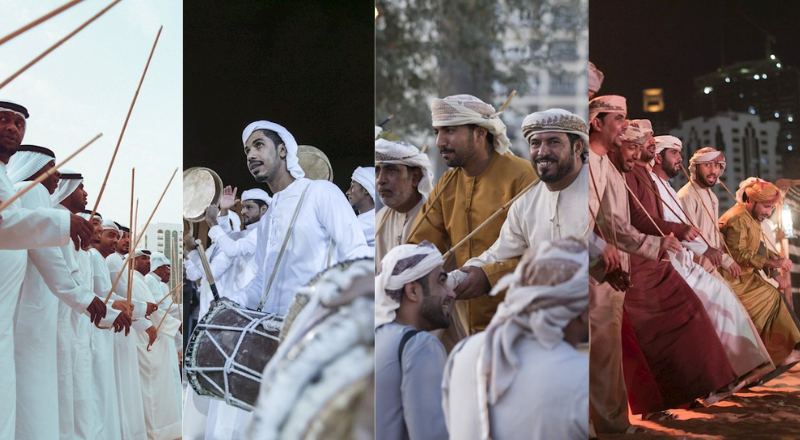
THE UAE HERITAGE FILES: THE AL-AYYALA
Learn the way of the land…
In this installment of the UAE heritage files, we’re taking a deep dive into one of the most interesting and endearing displays of unity in Emirati culture – the Al-Ayyala, the traditional local dance of the region. When one is asked to conjure up a image of the traditional dance of the UAE, this is probably what comes to mind. If you’ve lived in the UAE long enough, you’ve seen this.
The traditional performing art holds many layers of significance for the community and culture of the UAE, representing the values of dignity and honour, and the ethos and gallantry of Bedouin life. it’s embedded so deeply into the culture and is a symbol of national identity and unity.
Setting the scene…
The expressive dance, which is an integral part of festivities, celebrations, weddings and national holidays, features two rows of men and boys who hold thin bamboo canes and move together to a steady drummed rhythm. Along with the movement, there is also poetry and chants.
The scene that the dance depicts is that of a battle, with the two rows of 20 or more dancers facing each other and the bamboo canes symbolising the weapons – arrows or swords. Each row takes turns in making movements with their canes, heads, shoulders and arms to suggest defeat or victory.
The rhythm is set and maintained by Al-abu or the father. This is an inherited role and the performer is responsible for training and leading the others, who could be of any age range, social class and background, which si what makes such a lasting symbol of unity.
The action between the rows consists of a band with brass instruments, drums and tambourines, which the plays the music they dance to. The melody has seven tones in an irregular repeated pattern and the men chant lines of verse, usually from Nabati poetry, on the themes of chivalry and valour. This theme of poetry typically changes according to the occasion.
Across the country…
Like any regional art form or craft, each community, from the coast to the land, has their own variation of the Al-Ayyala. The variation may be minor, but they are unique to the community and their culture. It could be in the poems chanted, the the speed of the rhythm, in the movement and sound tones.
Along with the rows of dancers, there is also another group of men called yaweela, translated to movement, who move in a wide circle stepping in the rhythm to the beat and waving their canes.
Like any cultural art form, this dance is a sacred part of Emirati identity. Inscribed in 2014 on the UNESCO Representative List of the Intangible Cultural Heritage of Humanity, it is a matter of pride for the people.
Images: Socials
2024-07-26T08:15:42Z dg43tfdfdgfd